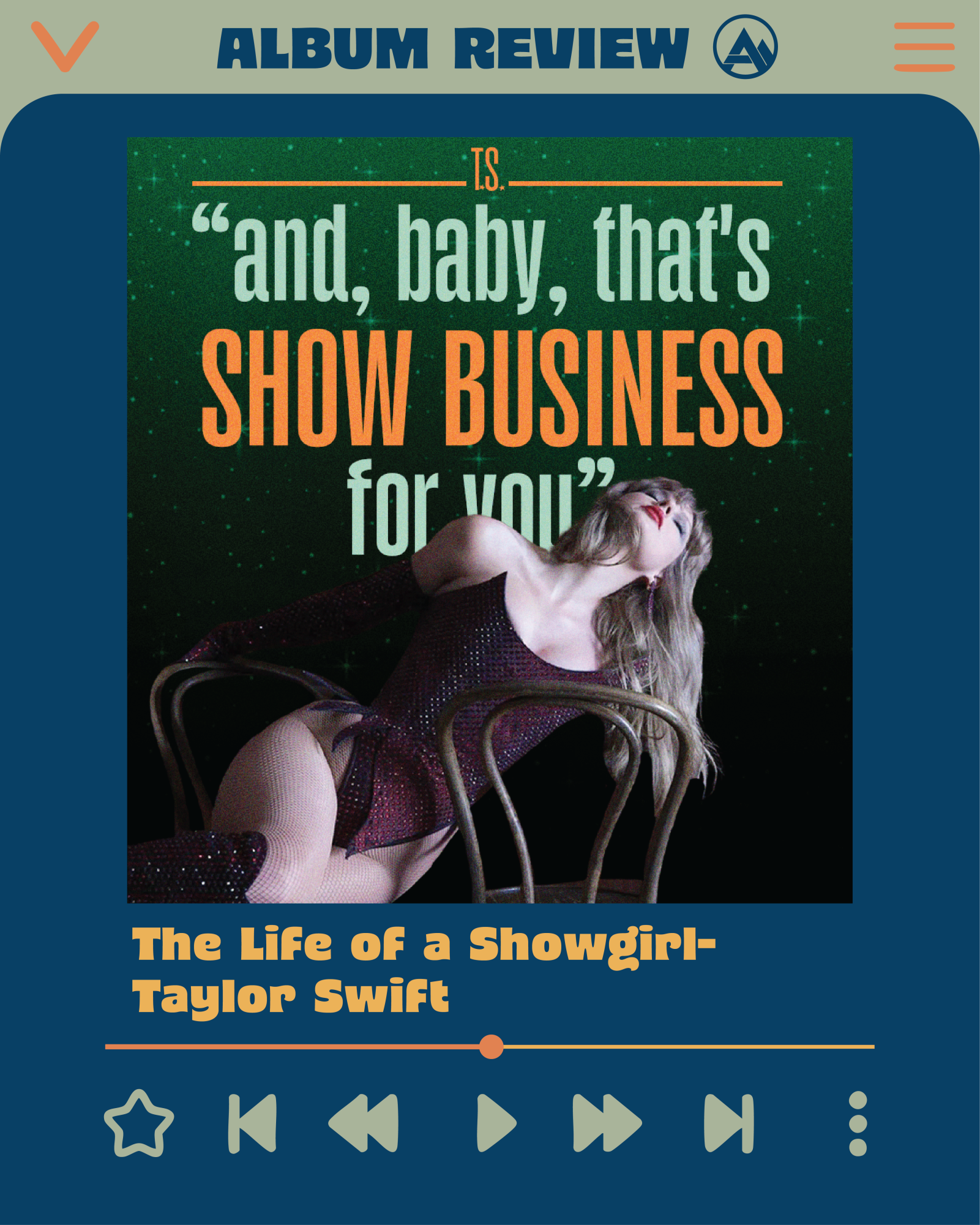While living the life of a showgirl on stage during “The Eras Tour,” Taylor Swift poured every thought she had offstage onto paper and a 12-track record. Her goal with this project was to create infectious melodies and vivid yet crisp lyrics. The album’s main theme encompassed everything that happens behind the curtain of the pop star’s life. Reuniting with producers Max Martin and Shellback, Swift created the record she has been wanting to for a long time, having collaborated with them for her other projects “Red,” “1989” and “Reputation.”
The opening dance-pop track, “The Fate of Ophelia,” sets a euphoric and romantic tone for the album. Swift celebrates her lover saving her from a fate much like Ophelia’s, the tragic heroine in William Shakespeare’s “Hamlet.” The singer premiered the music video for the track both at the beginning and end of her documentary, “Taylor Swift: The Official Release Party of a Showgirl.” The music video included vibrant costumes, elaborate sets and multiple references to “Hamlet,” an example being the infamous painting of Ophelia replicated by Swift herself in the video. The film was shown exclusively in theaters Oct. 3-5.
The theme of finally finding a love for life is displayed throughout other tracks with the same upbeat musical notes. In the track “Opalite,” she supports high-spirited instrumentals with lyrics like, “Sleepless in the onyx night / But now, the sky is opalite.”
The slowed-down, synth-pop track “Wi$h Li$t” showcases the desire to settle down with a partner to enjoy a simple and sweet life. “Honey” carries a similar tone, with lines like, “You can call me ‘honey’ if you want because I’m the one you want.”
Swift uses family dynamics as a motif twice on this album. The track “Eldest Daughter” switches gears musically into the form of a piano ballad. It relates to the burden the eldest daughter of a family often feels.
“Father Figure” uses a metaphor of mentorship to explore power and control in the music industry. This can be heard in the lyrics “This love is pure profit, just step into my office” and “Leave it with me, I protect the family.” In Swift’s documentary, she said she sees herself as both the mentor and apprentice in this song.
Lyrically and musically, “Father Figure” pays homage to the late singer George Michael’s funk track of the same title. He is credited on Swift’s song.
Another theme of the album, often found in the rest of her discography, is maneuvering through everyday life as someone in the spotlight. Her upbeat track, “Elizabeth Taylor,” tells of romantic love through the lens of a starlet dealing with being under Hollywood’s microscope.
Swift coins the ‘60s actress as the ultimate showgirl and one of her role models. She admires the way Elizabeth Taylor maintained passion and humor despite the scrutiny she faced in her profession.
The title track elaborates on this idea while giving a cohesive closing to the album as the final song. Featuring Sabrina Carpenter, the song encapsulates what it means to pay the price for fame with lyrics like, “I paid my dues with every bruise, I knew what to expect” and “And now I know the life of a showgirl, babe.”
In the documentary, Swift expresses she could not imagine anyone else being featured on this track, as Carpenter is a wonderful fit for the cutthroat industry; she fits the image of the showgirl that Swift paints throughout the album.
As a whole, Swift tells a story of falling in love, outward social pressure and navigating life from the perspective of someone living in the public eye. She shows not only the glamorous life of a showgirl but also the sensitivity and depth of the person behind the sequins and feathers — a true look behind the velvet curtain.


